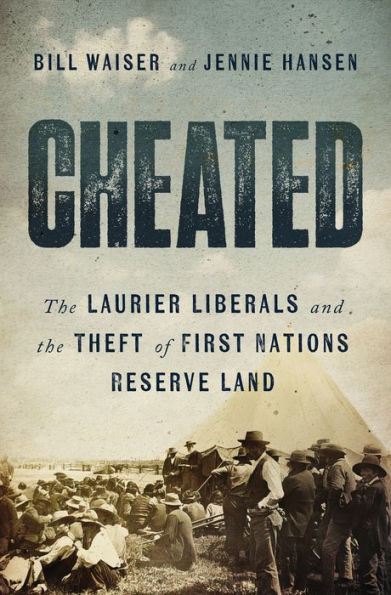
Cheated: The Laurier Liberals and the Theft of First Nations Reserve Land
352
Cheated: The Laurier Liberals and the Theft of First Nations Reserve Land
352Paperback
-
PICK UP IN STORECheck Availability at Nearby Stores
Available within 2 business hours
Related collections and offers
Overview
The story of how Laurier Liberals took hold of the Department of Indian Affairs in 1896 and transformed it into a machine for expropriating Indigenous land.
You won’t find the Ocean Man and Pheasant Rump reserves on a map of southeastern Saskatchewan. In 1901, the two Nakoda bands reluctantly surrendered the 70 square miles granted to them under treaty. It’s just one of more than two dozen surrenders aggressively pursued by the Laurier Liberal government over a fifteen-year period. One in five acres was taken from First Nations.
This confiscation was justified on the grounds that prairie bands had too much land and that it would be better used by white settlers. In reality, the surrendered land was largely scooped up by Liberal speculators — including three senior civil servants and a Liberal cabinet minister —and flipped for a tidy profit. None were held to account.
Cheated is a gripping story of single-minded politicians, uncompromising Indian Affairs officials, grasping government appointees, and well-connected Liberal speculators, set against a backdrop of politics, power, patronage, and profit. The Laurier government’s settlement of western Canada can never be looked at the same way again.

Product Details
| ISBN-13: | 9781770417489 |
|---|---|
| Publisher: | ECW Press |
| Publication date: | 10/03/2023 |
| Pages: | 352 |
| Product dimensions: | 5.75(w) x 8.75(h) x 0.80(d) |
| Lexile: | 1260L (what's this?) |
About the Author
Historian Jennie Hansen has been involved in numerous projects that investigate how nature was understood, appropriated, and administered under British imperialism. She lives in Saskatoon, SK.
Read an Excerpt
Canada’s First Nations had a treaty right to reserves, a solemn promise by Indian Commissioner Alexander Morris that they were “inviolate so long as the grass grows and the sun shines.” But the Laurier government broke this treaty promise by embarking on a concerted campaign to take away reserve land. Twenty-one percent of prairie reserves (one in five acres) was surrendered between 1896 and 1911. It’s a dubious record that has never been bested by any subsequent Canadian government.
Seven days before the tender deadline, Smart, Pedley and White secretly started work on their own bids for the Pheasant’s Rump and Ocean Man lands. They struck an agreement with Pedley’s former law partner A.C. Bedford-Jones to submit tenders on their behalf. Nor would Bedford-Jones use his own name on the bids. To ensure that no one could link the trio to the bids, three other Toronto lawyers — R.B. Beaumont, J.W. Marsh, and E.C. Mackenzie — would have their signatures forged on the documents.
The tenders were typed on government stationery in Pedley’s Ottawa office over several nights. Bids were crafted for each quarter section based on the otherwise confidential land assessment information gathered by surveyors Reid and Lash. The completed forms were sent to Bedford-Jones at his Canada Permanent Building office, where he signed and dated them, appended the deposits, and then put them in three bundles, according to the name on the tenders, before mailing them to Ottawa.
Smart, Pedley, and White must have been pleased with their handiwork, even smug about how all their scheming was about to pay dividends. Not only were they about to commit fraud, they were also about to defy the Indian Act, which forbade department employees from buying any land that had been surrendered by a band.
This prohibition was part of the original Indian Act, passed in April 1876 by the Alexander Mackenzie government, and continued to remain in force through amendments to the act. Smart might insist that he wasn’t actually the “agent for the sale of Indian lands,” as specified in the legislation, but he was the one who decided how the Moose Mountain reserves were to be marketed and how the sale was to be advertised and where. If caught, Smart faced the loss of his job and a fine. His land purchase would also be voided.
Secretary McLean and Lands branch chief Orr opened the tenders together. It was the first time that former Indian land had been put up for sale in such a manner, and the results were nothing short of remarkable. Three Toronto lawyers, who likely had never traveled to western Canada or could even locate Moose Mountain on a map, successfully bid for 298 of the 308 quarter sections. Put another way, they secured 45,000 acres (about seventy square miles) for only $1.23 per acre. The average price for prairie lands that year was $3.36 per acre.
